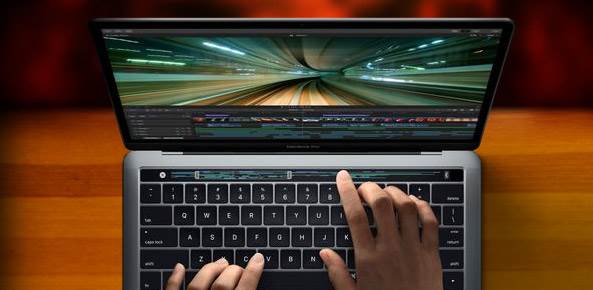
Unveiled at last week’s Apple event that was streamed live, the new MacBook Pro laptops are the company’s thinnest and lightest yet. They also come with a number of new or significantly updated features, including Touch ID for Apple Pay, a brighter and more color-rich Retina display and dynamically changing Touch Bar controls above the keyboard.
However, even some of Apple’s fans are criticizing other aspects of the new MacBooks, in particular their high prices and upper RAM limit of 16 GB. Additional complaints include the elimination of standard ports for USB and HDMI connections, lack of support for SD cards and even the disappearance of the Mac startup chime.
Since their debut, the new MacBook Pros appear to have been met with “tepid” demand, according to a note reportedly sent to investors by KGI Securities analyst Ming-Chi Kuo. However, Kuo also predicted that lower prices and options for higher RAM arriving next year could mean longer-term promise for the Apple laptops.
Optimized for Performance, Portability
The updated MacBook Pro design “optimizes both performance and portability,” resulting in “an extremely purposeful and powerful creative tool,” chief design officer Jony Ive said in a video accompanying Apple’s announcement last week. Beyond new features, such as Touch ID and the Touch Bar, the laptops also sport completely redesigned speakers, a more responsive second-generation version of the butterfly keyboard mechanism and “the best Retina display we’ve ever put in a notebook,” he said.
One of the most visible changes is the replacement of the standard line of function keys above the keyboard by an OLED (organic light-emitting diode) strip of touchscreen keys that provides dynamically changing control options depending on the application being used. The new Touch Bar can be customized according to a user’s control preferences, enables one-tap answering of iPhone or FaceTime calls and provides quick access to text and emoji suggestions while using Messages or Mail.
The Touch Bar feature is available in either a 13-inch (starting at $1,799) or 15-inch ($2,399 and up) MacBook Pro model, while a 13-inch version without the Touch Bar is priced starting at $1,499. Powered by a dual-core Intel Core i5 or i7 processor, the new laptops weigh in at either 3.02 (13-inch model) or 4.02 pounds (15-inch model) and each offers a battery life of up to 10 hours.
Price Cuts, More Memory in 2017?
According to a report published yesterday by MacRumors, KGI Securities analyst Kuo told investors in a note that he expects Apple to follow typical form by following last week’s higher-priced major upgrade of the MacBook Pro with price cuts next year, most likely in the second half of 2017. He added that the new device’s reliance on USB-C ports will become more attractive as the market for such connections matures.
For now, connecting the new MacBook Pro to a non-USB-C iPhone, camera or video device will require users to use a variety of adaptors. BGR reported last week that adding dongles for a phone, SD card, Ethernet device or HDMI or VGA video could cost a user nearly $265.
In his note, Kuo also added that Apple fans yearning for a MacBook Pro with more memory could take heart in the possibility of new power-saving processors from Intel next year.
“[T]he new MacBook to be launched in 2H17 may support 32 GB DRAM, eventually attracting more core users; this depends on whether or not Intel ships Cannonlake CPU on time in 2017, which features 15-25% less power consumption of LPDDR 4, versus the existing LPDDR3,” Kuo said.
However, Ars Technica’s Andrew Cunningham questions that possibility, noting in a tweet yesterday that MacBook Pro-level Cannonlake CPUs “won’t exist” and that Intel’s Kaby Lake will be the only other processor option for the laptops next year.





![[CES 2026] An Entertainment Companion for Every Moment Seen](https://loginby.com/itnews/wp-content/uploads/2026/01/1768923629_CES-2026-An-Entertainment-Companion-for-Every-Moment-Seen-100x75.jpg)
